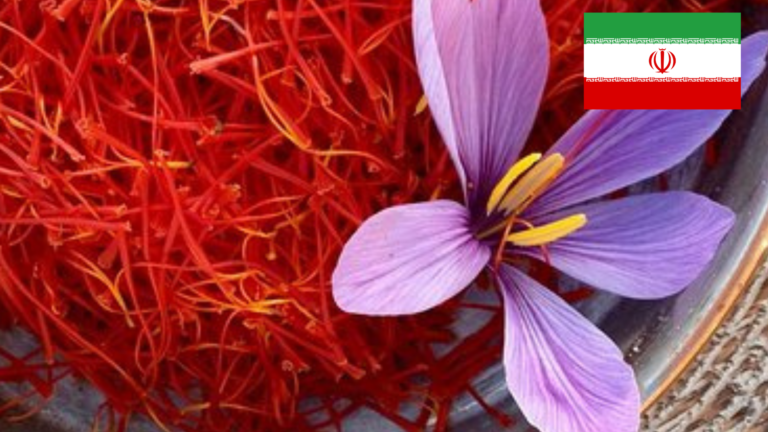
Is Iran’s ‘Red Gold’ the World’s Most Valuable Spice?

Iran is the world’s leading exporter of saffron, often called “red gold” due to its high value and vibrant crimson threads. Iran accounts for over 90% of global saffron production, exporting to top markets like Spain, UAE, India, China, and France. This precious spice is treasured for its distinct flavor, aroma, and color, used in culinary masterpieces, traditional medicine, and luxury products worldwide.
Why Is Iranian Saffron So Special?
Ideal Climate: Iran’s arid climate, rich soil, and high-altitude regions provide the perfect environment for saffron cultivation.
Traditional Farming Methods: Saffron is painstakingly hand-harvested—it takes around 75,000 saffron blossoms to produce just one pound of saffron.
Superior Quality: Iranian saffron has a high concentration of crocin, picrocrocin, and safranal, giving it unmatched color strength, flavor, and aroma.
Challenges Iran Faces:
Sanctions & Trade Barriers: International sanctions have affected Iran’s ability to export freely, limiting market access.
Price Fluctuations: As a luxury commodity, saffron prices are sensitive to supply chain disruptions and global economic shifts.
Climate Change: Droughts and changing weather patterns threaten saffron yields in key growing regions.
Global Competitors:
Countries like India, Spain, Afghanistan, and Morocco also produce saffron, but they struggle to match Iran’s scale, quality, and traditional expertise. Competitors often rely on smaller-scale production, leading to higher costs and lower yields.
In Iran, saffron is more than just a spice—it’s a symbol of heritage, pride, and resilience. From Persian rice dishes like Tahdig to traditional teas, saffron’s golden threads are woven into the fabric of Iranian culture. The delicate hand-picking process reflects the dedication and craftsmanship passed down through generations of farmers.
What’s Next for Iranian Saffron?
As the world shifts towards natural, organic, and health-conscious products, saffron’s popularity is skyrocketing. Its antioxidant properties and use in skincare, wellness, and gourmet cuisine signal a bright future. However, Iran must navigate global trade dynamics and sustainability challenges to maintain its dominance.
Have you ever tried real Iranian saffron? How do you use saffron—in food, tea, or beauty routines? Comment below!
Is saffron just a spice, or the golden thread connecting cultures worldwide? Let’s talk!